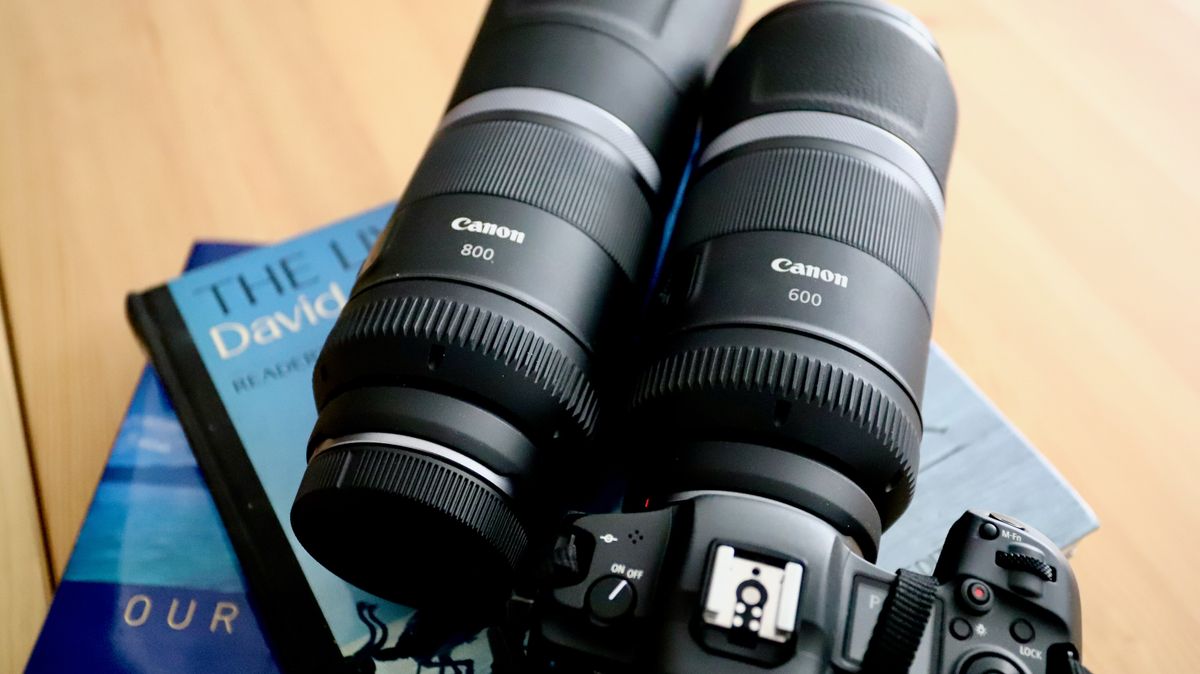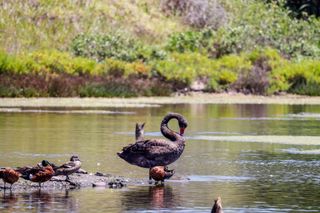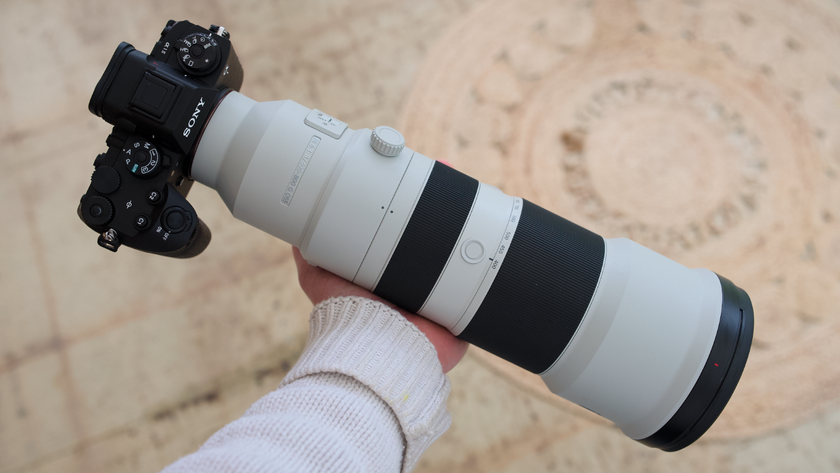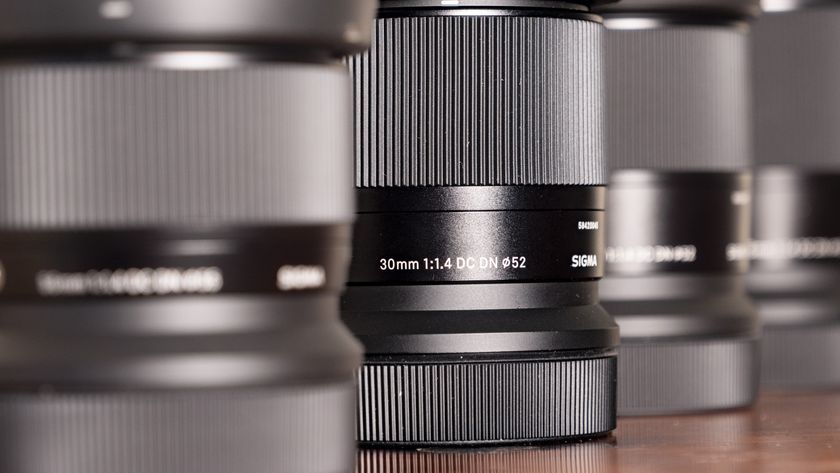Canon RF 600mm and 800mm f/11: are these fixed-aperture telephotos worth it?
Turning the tables on expensive super telephoto zooms

Super telephoto primes have always been specialty lenses. Unless you were regularly shooting sports or wildlife, it was virtually impossible to justify the cost. Of course, a smaller sensor size makes it easier to get to the super telephoto focal lengths – essentially anything longer than 300mm – but even these lenses can still be quite expensive, especially the faster primes.
Take for example Sony’s 400mm f/2.8 GM OSS for the FE mount – this excellent lens costs just shy of $12,000 / £10,500 / AU$19,500 and weighs in at a little under 3kg. Following closely behind is Nikon’s monster F-mount AF-S 600mm f/4.0G ED VR, which will set you back $12,299 / £12,599 / AU$15,999, while Canon’s rival EF-mount 600mm f/4.0L IS III USM is going to cost you even more. Of course, if you need to go longer, 800mm primes are going to be even more expensive and just as heavy, if not heavier.
However, Canon’s new RF 600mm f/11 IS STM and 800mm f/11 IS STM lenses are hefty neither in price nor size. They’re game changers, and showcase what can be achieved with the new mirrorless systems. Both lenses are affordable at $699 / £749 / AU$1,399 and $899 / £979 / AU$1,799 respectively and weigh just 930g and 1,260g respectively.
It’s natural to question whether the cost-cutting here has come at the expense of image quality and performance, and we’re happy to report that you get plenty of bang for your buck if you choose to get either or both lenses.
- Best Canon cameras to buy in 2021
- Best RF lenses to go with an EOS R-series body
- Our review of the Canon RF 85mm f/2 Macro IS STM lens

Playing the long game
With these two RF lenses, Canon has made super telephoto primes are a lot more accessible to hobbyists and enthusiasts. While they’re still a little niche, there is a justification for buying them, and that’s a combination of cost and image quality.
It would be a little unfair to compare the results from Canon’s 600mm and 800mm f/11 primes to more expensive glass – after all, you’re paying for superior quality, optics and performance there – but if weather-sealing isn’t a dealbreaker, then these two lenses produce some truly exceptional results.
Admittedly they’re designed for use with the newer Canon EOS R5 and EOS R6 bodies, taking advantage of their superior autofocus speed and performance (particularly for sports and wildlife photography), but you’ll still get plenty of great shots with the older EOS R models too, and all of them handheld.
Get daily insight, inspiration and deals in your inbox
Sign up for breaking news, reviews, opinion, top tech deals, and more.

Thankfully there’s in-lens stabilization available, and given how light they both are, you can leave the tripod behind and still shoot at slower shutter speeds. Applying the one-divided-by-focal-length law to establish the slowest ‘safe’ shutter speed for handheld photography, the 800mm’s starting point is 1/800 second and the four stops of OIS correction theoretically allows you to venture down to 1/50 second. With the 600mm, the five stops of correction means that you might be able to get away with shooting at shutter speeds as slow as 1/15 second.
However, for reasons that aren’t entirely clear, the f/11 super teles don’t have Canon’s Co-ordinated Control IS where the OIS and the IBIS (in-body image stabilization) in the EOS R5 and R6 join forces to extend the correction range and also compensate for movements in three additional planes to the standard pitch and yaw. As far as we can see, IBIS is effectively deactivated when these lenses are fitted to either the R5 or R6. Despite that, we managed to get about 65% usable shots all captured handheld at 1/40 second to 1/160 second.

On the straight and narrow
Then there’s the elephant in the room: the controversial decision to use a fixed f/11 aperture in these lenses. But you need to sacrifice aperture to make a lens smaller, lighter and more affordable, even if it means they’re slower than other primes like Nikon’s AF-S 800mm f/5.6E FL ED VR, the Canon EF 800mm f/5.6L IS USM or Sigma’s 800mm f/5.6 APO EX DG HSM (with only the last example available for a four-figure price tag).
Compared to the 800mm primes listed above, the Canon RF 800mm f/11 is slower by two stops. And if you’re comparing these to a f/2.8 alternative, the new RF telephoto primes are a full four stops slower. That means you’re shooting at much slower shutter speeds. For example, if you’re able to shoot action at f/2.8 with a shutter speed of 1/500 second, this f/11 aperture will slow you down to 1/30 second. And yet, as mentioned above, the stabilization on the lenses makes this scenario work.

Another caveat that we had to deal with these two lenses was having the autofocus (AF) points clustered in the middle while using the EOS R5 body. While that can be limiting, it does force you to compose your shots with more thought, with the subject smack in the centre of the frame. When it comes to wildlife photography, that actually works really well.
And if you’ve got your subject dead centre, you’ll want a bokehlicious background. It’s easy to assume that a f/11 aperture won’t produce pleasing depth-of-field effects, but that’s not entirely determined by the aperture. If you’re far enough away from your subject, and there’s sufficient distance between it and the background, you’re going to get good background blur. Both of Canon’s new RF telephoto primes have long minimum focusing distances, producing reasonable bokeh to make the subjects pop.






Light works
In the digital camera era, the ability to change the ISO from shot to shot, and the steady improvement in high ISO performance (the R6, for example, delivers very acceptable results at ISO 51,200 or even ISO 102,400) make it easier to work around a fixed aperture. That said, we tested both lenses at ISO 100 (albeit in bright sunshine) and got excellent results.
Additionally, Canon’s Dual Pixel CMOS AF II autofocusing still operates at f/11, but obviously not using all the available measuring points (the small aperture means that the AF area is reduced to roughly 40% horizontal and 60% vertical). If you need to use faster shutter speeds to freeze subject movement, then adjusting the ISO is really the only control available for dealing with changing light conditions, and if there’s a bit more noise in the image, so be it. You can deal with that little bit in post production.
If you’re someone who’s never used a super telephoto lens with long focal lengths of 600mm and 800mm, it might be challenging to get round the small angle of view. While it’s still easy enough to find your subject with the RF 600mm f/11, the 800mm lens is definitely not easy as angle of view is just three degrees diagonally. It’s not easy to locate a subject, and then track it, particularly small flighty ones.

Traveling light
Armed with an 800mm lens, you'll be really up close and personal with your subjects, provided you have the hand-eye coordination to track them. But if that's not close enough, both lenses work really well with Canon’s new RF 1.4 and 2x teleconverters.
There’s definitely a case to be made for the Canon f/11 super telephoto primes – they’re so much more accessible at a lower price tag than the competition, produce really good results and are remarkably light and well-balanced (even when extended to their shooting position).
If you’re someone who loves to take pictures while you’re on, say, your daily walk with your dog, leaving the house with just your EOS R attached to one of these lenses means you're perfectly equipped when you spot something in the distance, and without the extra load. No more planning needed, so much easier to adhere to carry-on baggage weight restrictions while traveling, and being able to take shots that get you up close and personal with the subjects far away – Canon's RF 600mm and 800mm primes definitely make the niche more mainstream.
We loved the veratile Canon RF 100-500mm f/4.5-7.1L IS USM – it’s a great telephoto zoom that works with Canon’s teleconverters too – but you can buy both the RF 600mm and 800mm f/11 primes and still have money saved. Need we say more?
- Quirky, fun and monocular: read our review of the unique Canon PowerShot Zoom

While she's happiest with a camera in her hand, Sharmishta's main priority is being TechRadar's APAC Managing Editor, looking after the day-to-day functioning of the Australian, New Zealand and Singapore editions of the site, steering everything from news and reviews to ecommerce content like deals and coupon codes. While she loves reviewing cameras and lenses when she can, she's also an avid reader and has become quite the expert on ereaders and E Ink writing tablets, having appeared on Singaporean radio to talk about these underrated devices. Other than her duties at TechRadar, she's also the Managing Editor of the Australian edition of Digital Camera World, and writes for Tom's Guide and T3.


